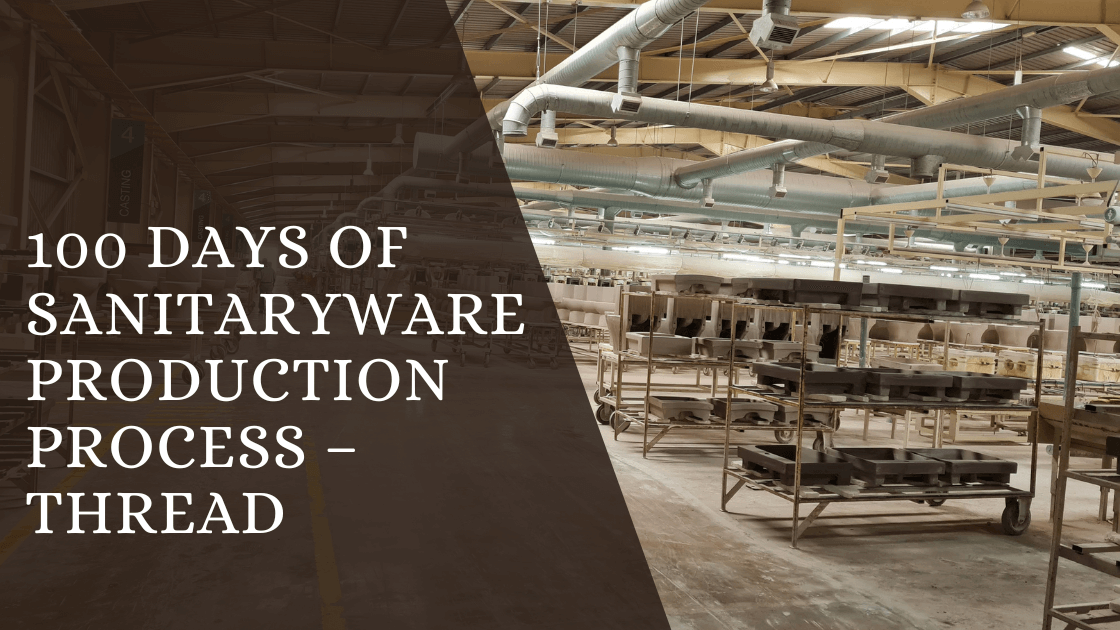China Clay – Definition, Processing, Properties & Uses
Find China Clay Definition, Processing, Properties & uses here. China Clay is also known as kaolin & white clay. Can use to make the required shape when it is wet.
What is china clay?
China Clay is also known as kaolin & white clay. Primary clay formed by natural kaolinisation process. It is formed by the decomposition of some part of feldspar mineral. White in colour, Used in the ceramic slip casting process, pressing processes and forming process as a body former and filler.

The chemical formula of China clay is Al2Si2O5(OH)4.
Formation of China Clay:
Many theories put for the Formation of China clay; some of them accepted widely. We will see some of the methods in details: 1) The igneous emanation theory. 2) The surface weathering theory. 3) The bog or moor water theory.
The igneous emanation theory:
As per Igneous emanation theory igneous gases from the centre of the earth and superheated steam, carbon dioxide, fluorine compounds and boron are the active agents to decompose some part of feldspar. Clay formed by this theory will be in deep depth from the Surface. Clays Found in china supports this theory.
The Surface Weathering Theory:
Clays formed by this Surface weathering theory found near to the surface. This theory explains that feldspar decomposed by water containing carbon dioxide. Clay found in France is created by this theory.
The bog or moor Water theory:
Clay Formed by this theory found near to the lignite beds. This theory explains that water from bogs are active agents for kaolinization as it contains ammoniacal salts and organic acids. This theory forms the German clays.
Processing of China Clay:
Processing of china clay difference from place to place but the essential step are the same. i)Excavating china clay. ii) Sieving process. iii) Settling process. iv) Filter press process. v) Drying process. vi) Packing and Transporting.
Excavation of china clay:
China clay extracted from the deposits by mixing with water using jet water splashier. Forced water is sprayed on clay and mixed with water, this water plus clay slurry is pumped to ground level. In this slurry, the clay content is very low, generally below 10 percent. Then this slurry is sent to the net process.
Sieving process:
The slurry mix from the deposit passed through a series of sieves. Usually 40 Mesh, 100 mesh and 200 mesh are kept in series to remove all other materials from the slurry. In this process, from small stones to sand materials were removed by sieves. The Sieved slurry will be sent to the settling process.

Settling Process:
Then this slurry is sent to a series of settling tanks. Clay particles are allowed to settle in settling tanks. In this process, the clay percentage in the slurry is increased up to 50 to 60 percentage. The settling tank is designed in a zigzag way as you can see in the below picture. It is to make the clay particles to settle quickly by Restricting the flow.

Filter press process:
Then the clay slurry is sent to fitter press by a pump. After the fitter press process, the clay will have around 15% to 20% of moisture content. The cake-like material is taken out from the filter press.

Drying Process:
This Cake form clay is dried naturally to remove moisture from it. Once dried, the moisture contact will be around 5%.
Packing & Transporting:
Dried china clay will be broken to small pieces and packed in 50kgs bags. And then it is transported to the required location.

Find the tests are carried out in Clay here and for the sanitary ware product.
Properties of China Clay:
China clay is Primary clay and generally found in white colour.
1. Casting Rate: High casting rate in slip casting compared to ball clay.
2. Particle size: Large particles when compared to Ball clay.
3. Green MOR: Modulus of rupture is low compared to ball clay.
4. Plasticity: Low plasticity compared to ball clay.
5. Refractoriness: High Refractoriness.
Uses of China Clay:
China clay used in all Kind of ceramic product production and other products for its properties. Following are the primary uses of the china clay,
1. Used In Sanitaryware industry
2. Used in the tiles Production industry.
3. Used in Refractory production.
4. Used in the Paper industry as a filler.
5. Used in Rubber industry as a raw material.
6. Used in textiles industries.
7. Used in the Dinnerware production process as a raw material.
8. Used in pottery works, Etc.
Comment below if you think I need to add anything more to this article. Find about Ball clay here.
Written by : Venkat Mani
Venkat Mani is a Ceramic Engineering Graduate from India, working in Sanitaryware production line for 15 years. He shares Meaningful content related to sanitaryware professionals that others find useful.
5s Comments
Leave A Comment
Find China Clay Definition, Processing, Properties & uses here. China Clay is also known as kaolin & white clay. Can




Can we mix China clay with Indian earth clay for pottery making. Will it be sustainable if we fire the pot or craft.
NO
can we use china clay in concrete for partial replacement of cement?
What is difference between fire clay and Vitreous china. Can provide the merits and demerits for both
regards
This is M hayat khan
00923016718412
Chat me on whatsapp